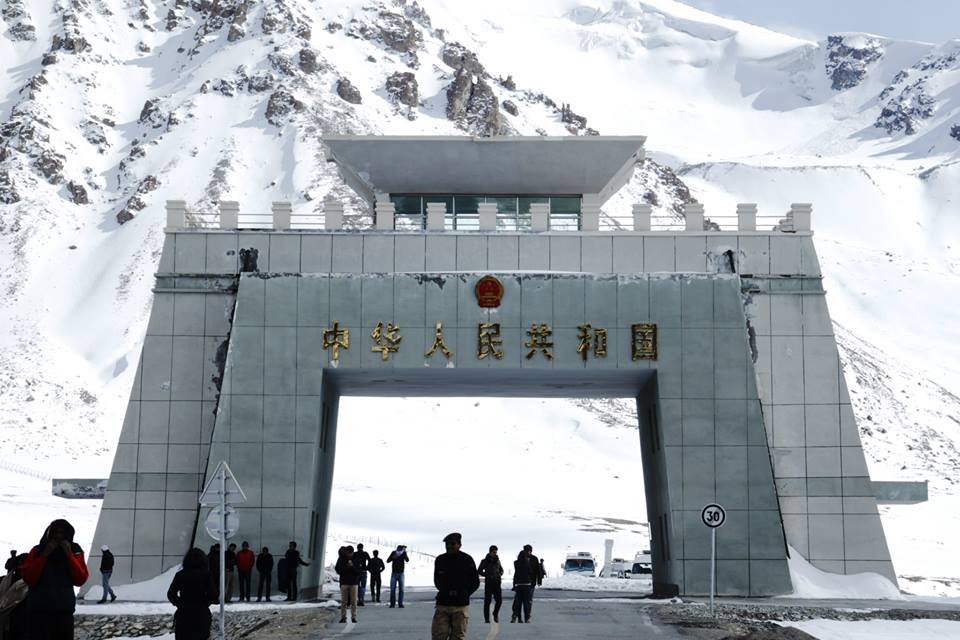CPEC . China–Pakistan Economic Corridor

(Chinese: 中国-巴基斯坦经济走廊; Urdu: پاكستان-چین اقتصادی راہداری; also known by the acronym CPEC) is a collection of infrastructure projects that are currently under construction throughout Pakistan.[2] Originally valued at $46 billion, the value of CPEC projects is now worth $62 billion.[3][4][5] CPEC is intended to rapidly modernize Pakistani infrastructure and strengthen its economy by the construction of modern transportation networks, numerous energy projects, and special economic zones.[6][7][4][5] On 13 November 2016, CPEC became partly operational when Chinese cargo was transported overland to Gwadar Port for onward maritime shipment to Africa and West Asia.[8]
A vast network of highways and railways are to be built under the aegis of CPEC that will span the length and breadth of Pakistan. Inefficiencies stemming from Pakistan's mostly dilapidated transportation network are estimated by the government to cause a loss of 3.5% of the country's annual gross domestic product.[9] Modern transportation networks built under CPEC will link seaports in Gwadar and Karachi with northern Pakistan, as well as points further north in western China and Central Asia.[10] A 1,100 kilometre long motorway will be built between the cities of Karachi and Lahore as part of CPEC,[11] while the Karakoram Highway between Rawalpindi and the Chinese border will be completely reconstructed and overhauled.[12] The Karachi–Peshawar main railway line will also be upgraded to allow for train travel at up to 160 km per hour by December 2019.[13][14] Pakistan's railway network will also be extended to eventually connect to China's Southern Xinjiang Railway in Kashgar.[15] The estimated $11 billion required to modernise transportation networks will be financed by subsidized concessionary loans.[16]
Over $33 billion worth of energy infrastructure are to be constructed by private consortia to help alleviate Pakistan's chronic energy shortages,[17] which regularly amount to over 4,500MW,[18] and have shed an estimated 2–2.5% off Pakistan's annual gross domestic product.[19] Over 10,400MW of energy generating capacity is to be brought online by the end of 2018, with the majority developed as part of CPEC's fast-tracked "Early Harvest" projects.[20] A network of pipelines to transport liquefied natural gas and oil will also be laid as part of the project, including a $2.5 billion pipeline between Gwadar and Nawabshah to eventually transport gas from Iran.[21] Electricity from these projects will primarily be generated from fossil fuels, though hydroelectric and wind-power projects are also included, as is the construction of one of the world's largest solar farms.[22]
External video
China Reaches Out to Pakistan With Massive Economic Plan.
CPEC's potential impact on Pakistan has been likened to that of the Marshall Plan undertaken by the United States in post-war Europe.[23][24][25][26] Pakistani officials predict that CPEC will result in the creation of upwards of 2.3 million jobs between 2015–2030, and add 2 to 2.5 percentage points to the country's annual economic growth.[27]
Were the initial $46 billion worth of projects to be implemented, the value of those projects would be roughly equivalent to all foreign direct investment in Pakistan since 1970,[12] and would be equal to 17% of Pakistan's 2015 gross domestic product.[28] CPEC is seen as the main plank of Chinese President Xi Jinping's Belt and Road Initiative.